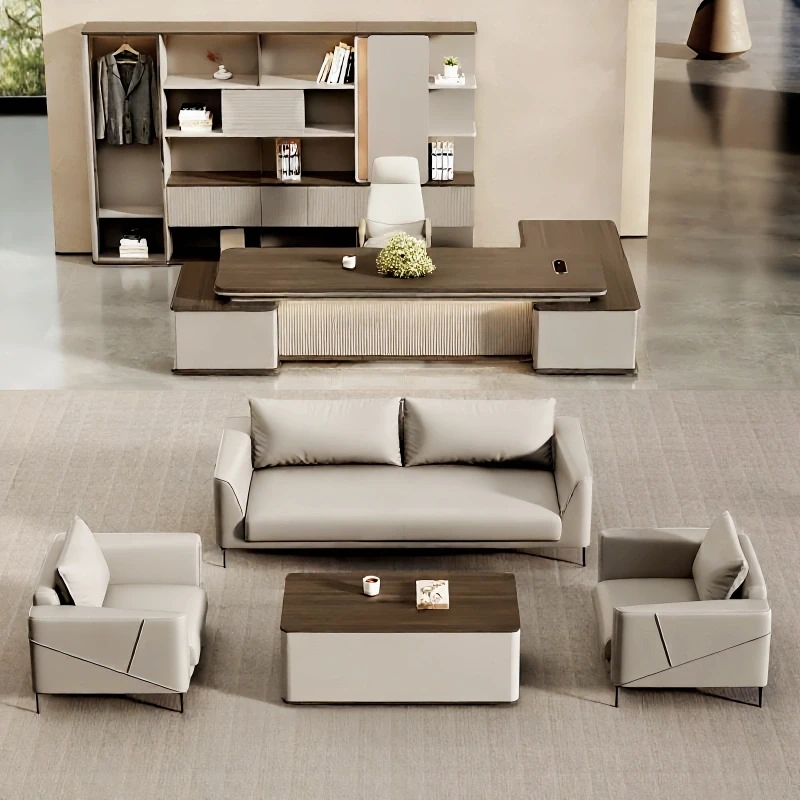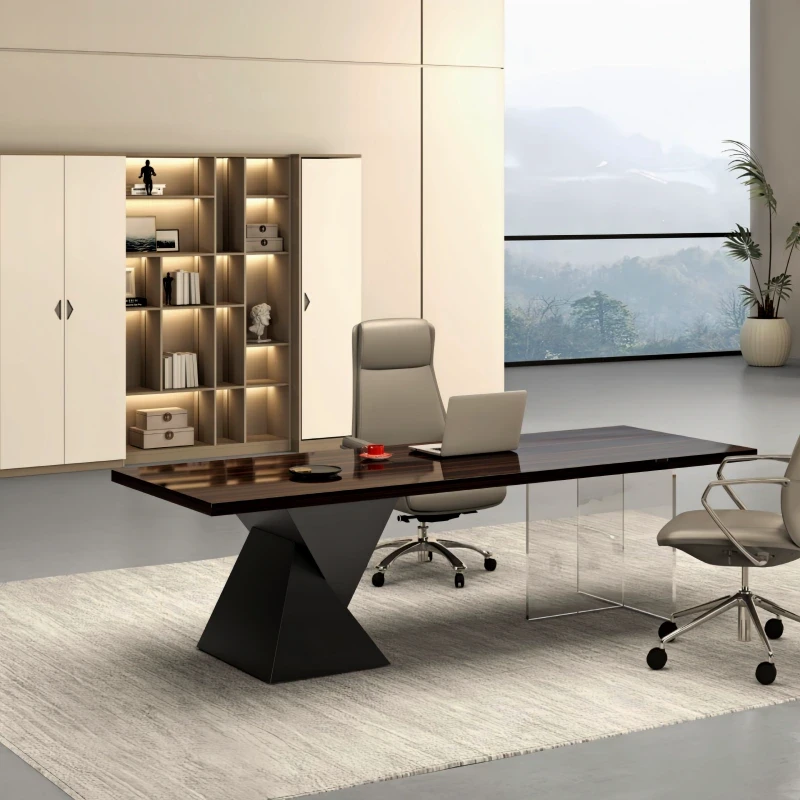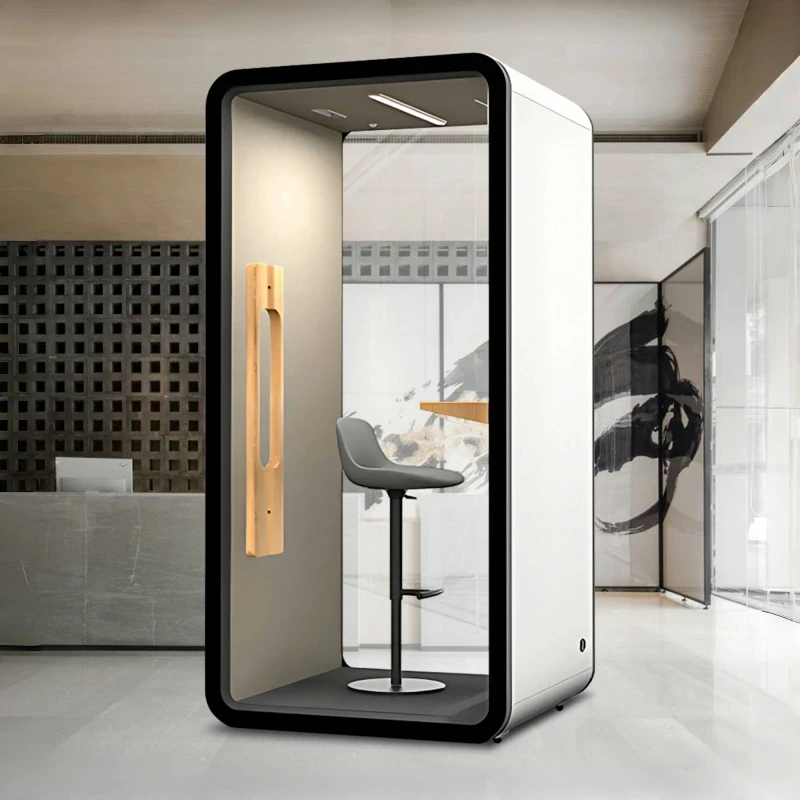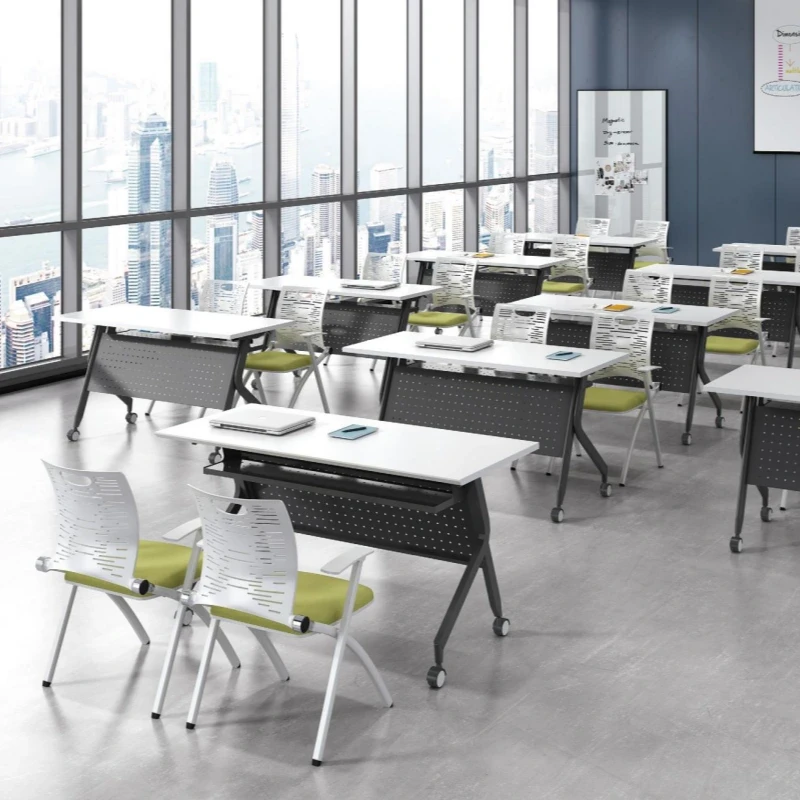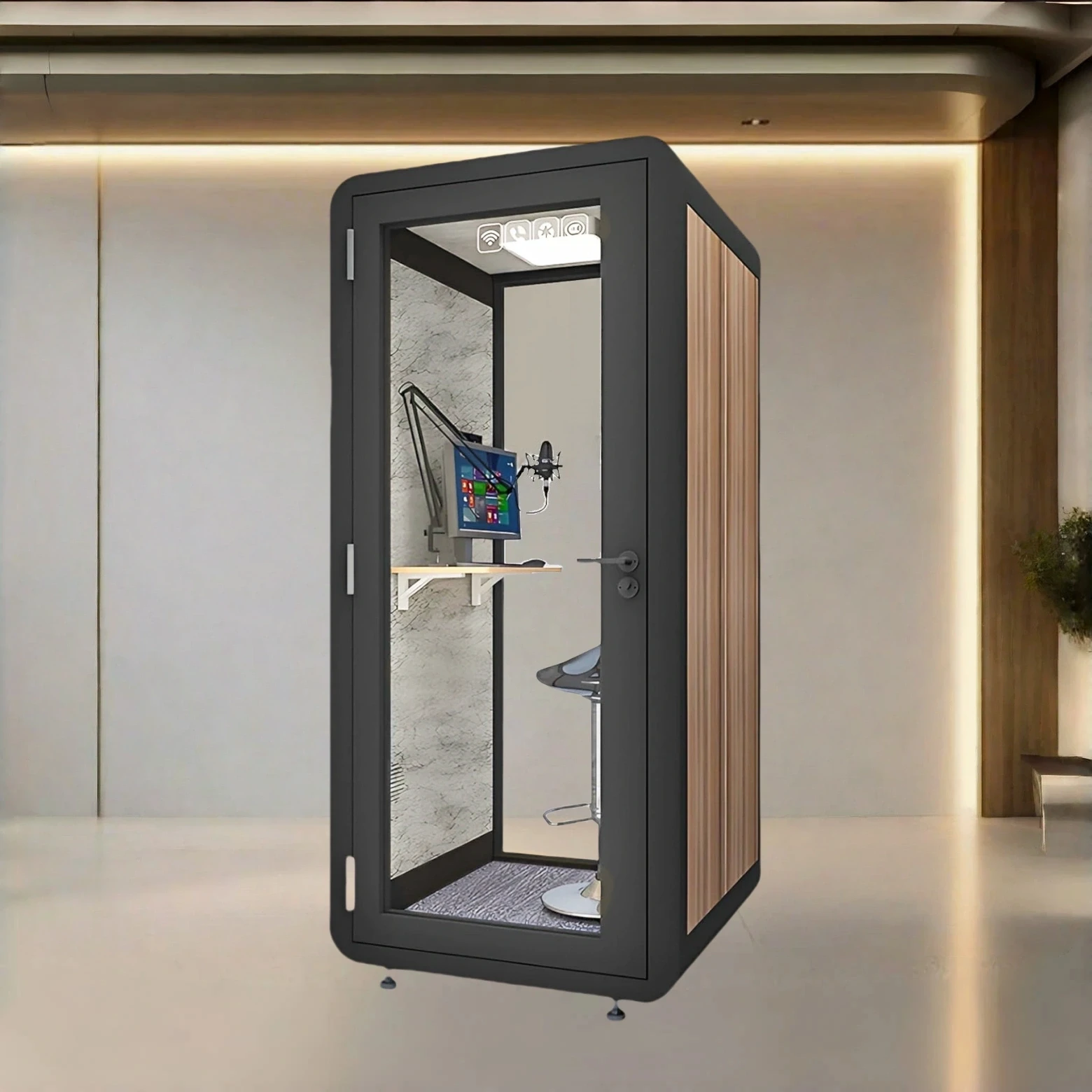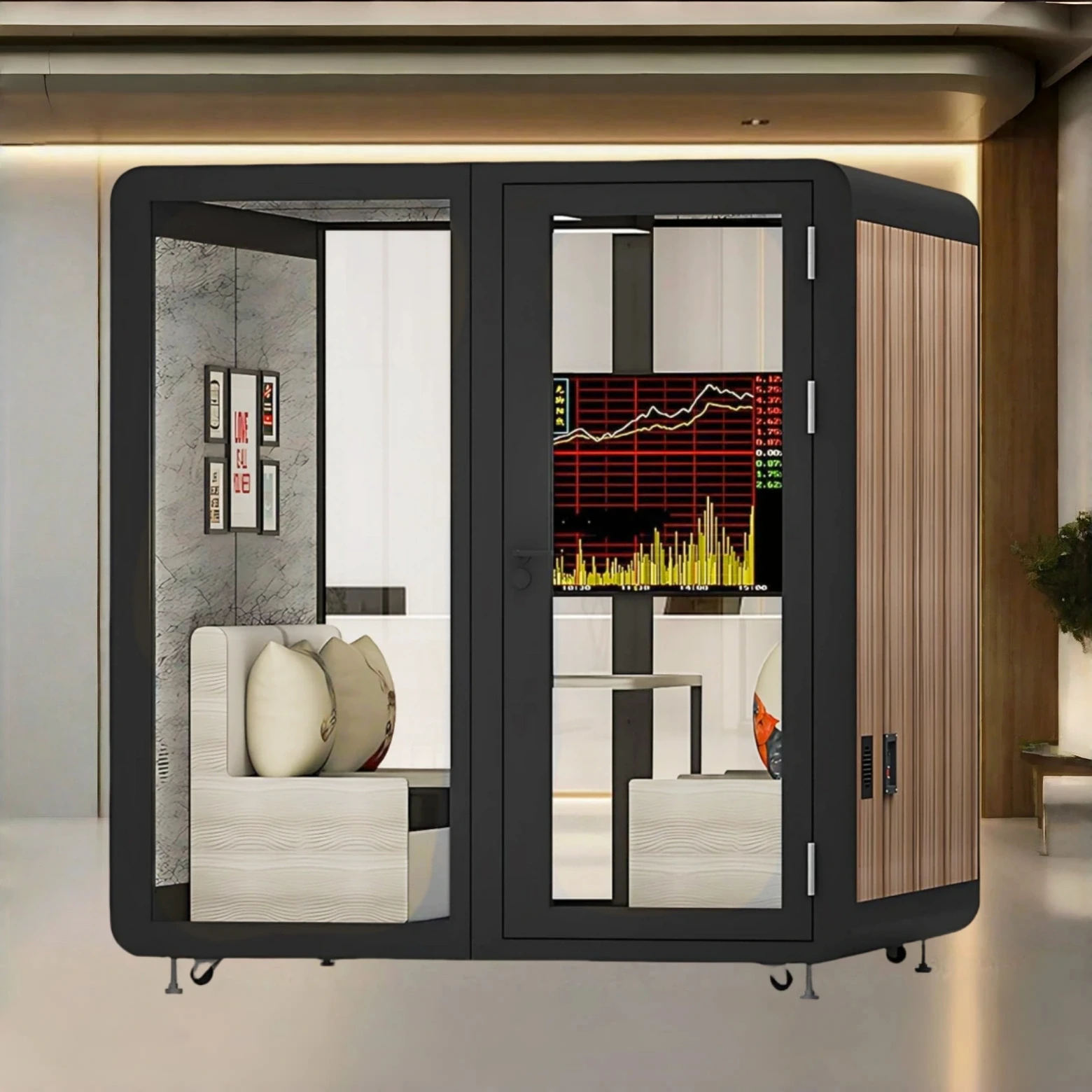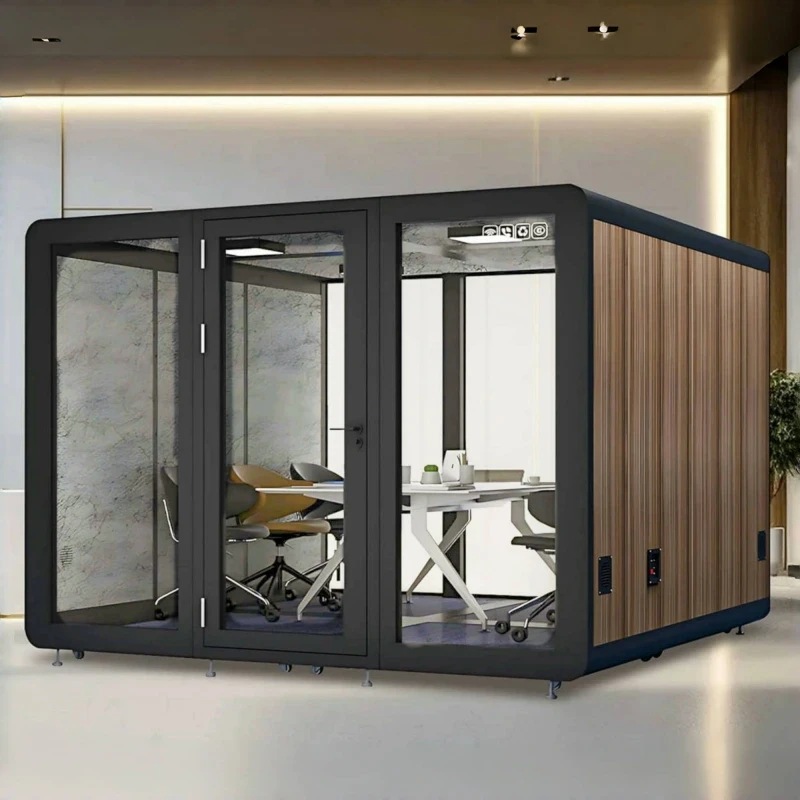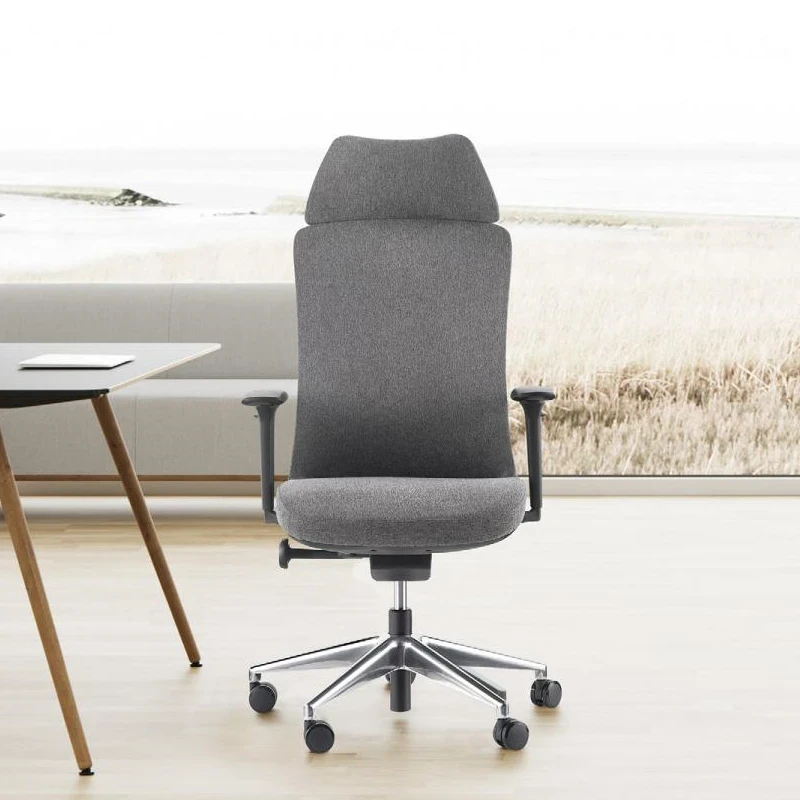For those looking to buy furniture, whether for home or office use, attractive and affordable panel office furniture is undoubtedly the first choice. However, due to the materials and craftsmanship of panel office furniture, which is mostly designed and manufactured by hand, the quality of the panel material is closely related to the manufacturing process, so when choosing panel office furniture, it is important to pay more attention to the craftsmanship.
Henan Huadu Times Furniture editor reminds you to pay attention to the following six points when purchasing panel office furniture:
1. Surface Quality: Panel-type office furniture is based on artificial boards such as particleboard and medium-density fiberboard, and is adorned with melamine, PVC, wood veneer, and paper-like wood grain veneers. The imitation wood grain pattern is clear and natural, smooth and even, and has a pleasant visual effect and feel. When purchasing, focus on inspecting the surface of the board for defects such as scratches, indentations, bubbles, degumming, peeling, and glue marks; ensure that the wood grain pattern flows naturally, without any artificial appearance. For symmetrical furniture, pay particular attention to the consistency and harmony of the board color and grain, so that the symmetrical panels appear to be made from a single piece. Also consider whether the furniture's color coordinates with the interior walls and flooring. Often, everything else is fine except the color, making this a crucial consideration.
Second, Production Quality: Panel office furniture is manufactured by cutting, trimming, and assembling components from preformed panels. Production quality is primarily determined by the quality of the cutting, edge and surface finishing, and panel ends. The cutting process for panel office furniture requires precise straightness, verticality, and angles. Generally, panel cutting techniques must be optimized to within 0.01 mm per meter. Panels that achieve this precision will have smooth edges and good angles after sawing, preventing tilting in the finished furniture.
Pay attention to the quality of the edge banding material and whether there are any unevenness or warping. In particular, pay attention to whether the edge is sealed on all six sides. Although formaldehyde-free adhesives are used, the production process of artificial boards will more or less emit volatile gases. Tight edge sealing is of course beneficial to the environment in the home.
The accuracy of the saw blade also affects the quality of the ends and edges of the panels. Scratches, chipped edges, and collapsed corners can also affect the appearance of panel office furniture. Edge and surface decoration primarily depends on whether the glue applied to the decorative parts is even, whether the bonding is firm, whether the trimming is smooth, and whether the edges of visible parts such as the sides of components, door panels, drawer fronts, and bottoms are sealed. A well-decorated panel should have no visible signs of bonding along its edges.
The key factors to consider when assembling a unit are whether the drilled holes are neat and tidy, whether the connectors are securely installed, whether there is any gap between the T-shaped joints where the flat surfaces meet the joints, and whether there is any looseness when pushed manually. Check whether the gaps between doors and drawers are too large (generally 1-2mm is recommended), and whether the doors and drawers open and close smoothly.
3. Quality of Metal and Plastic Components: Panel office furniture utilizes metal and plastic fasteners, so the quality of these components significantly impacts the quality of the furniture. Metal components must be flexible, smooth, and well-plated, free of rust, burrs, and other defects. The precision of the mating parts must be even higher. Plastic components should be aesthetically pleasing and colorful, with strong and resilient support points during use and not be too thin. Opening connectors should rotate flexibly, and internal springs should be appropriately tight to ensure smooth, easy, and frictionless opening and use.
The current market for panel office furniture primarily consists of complete sets of bedroom and office furniture. There are also multifunctional TV cabinets and other products. National standards specify the key dimensions (and functional dimensions) of these furniture. For example, desk furniture is required to have a height of 680-760mm. The clearance between the bottom edge of the middle drawer of a desk and the floor should be at least 580mm, and the clearance between bookcase shelves should be at least 520mm. These key dimensions should be carefully considered when purchasing, as furniture that is smaller than the specified dimensions can cause significant inconvenience and hinder its use.
Panel-type office furniture is generally based on particleboard and medium-density fiberboard. National standards specify the formaldehyde emissions from these boards. Particleboard should be no more than 50 mg/100g, while medium-density fiberboard should be no more than 40 mg/100g.
6. The structural strength of the furniture. First, check the gaps between doors and drawers. Large gaps indicate poor workmanship and will deform over time. Second, check whether the furniture is single- or double-boxed. Generally, in addition to the outer layer of panels, furniture should also have an inner layer of panels. This is called double-boxing, and double-boxed furniture is both beautiful and sturdy. Pay attention to the structural strength of the furniture. Gently push the furniture; if it shakes or creaks, it's not structurally sound.

 USD
USD
 GBP
GBP
 EUR
EUR
